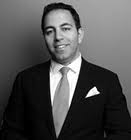
How much do I need to invest in Canada to get PR?
Canada is a stunning country with some of the most beautiful natural resources worldwide. From vast natural parks and sprawling space to thriving multicultural and diverse cities, it’s got everything you could want when choosing a place to live. A Canadian passport offers a world of international travel with ease. The country also has one of the most renowned education systems worldwide.
One of the things that has helped to make it the diverse worldwide hub it’s become is the multiple paths to immigration that are offered by the government. Both federally and locally, programs are helping those who want to become permanent residents on their journey. There are numerous paths to becoming a Canadian citizen, from entrepreneurship to business investments. So just how much do I need to invest in Canada to get PR, you ask? Well, it’s a little more complicated than that.
Immigration Through Pure Investment
Investment is one of the most widely popular ways to immigrate to Canada. It’s beneficial for both parties, each getting something positive from the agreement. The country is a booming center of technology set to rival Silicon Valley, so it’s not surprising that it’s drawing investors in all forms.
Currently, there is one program to obtain permanent residency through investment alone. The program is through Québec. The Québec Immigrant Investor Program, also known as QIIP, is designed for those looking to settle in Québec permanently and is done by making a temporary investment into the government of Québec.
It’s the only program of its kind that allows investment without the active management of a business.
Requirements for the QIIP Program
The program used to be country-wide, but since 2014 it has been limited to Québec. Unfortunately, it is currently not open; however, the government has not removed the information available nor commented about the program ending. It’s currently slated to be closed until April of 2023.
Financial Requirements
The requirements are straightforward. The prospective citizen must have assets amounting to at least 2,000,000 CAD or 1,570,000 USD. You must also offer proof that those assets were earned lawfully. Thankfully this includes things like real estate and includes your spouse’s assets if applicable. Nothing donated to you or your spouse for the last six months can factor into this.
The loan amount to the government is in the amount of $1,200,000 CAD or $945,000 USD and is done with no interest for the term of five years. It is acceptable to take a loan out for the investment, and therefore there is a lower amount paid out to finance the loan. The investment will be returned at the end of the five years.
Experience Requirements
There is also a requirement for experience in management. Two out of the last five years must have been worked in the managerial field in one form or another. This cannot be any type of school or training but must be experienced in the active management of either financial resources, people management, or asset management. Another option for this requirement is to be a business owner or shareholder in a company.
Social Requirements
Like many of the other immigration programs available in Canada, a scale of points must be acquired to qualify. The scale for the QIIP is designed differently but has a similar structure. Each individual is scored out of 100 points considering things like language skills, education, age, work experience, and even the number of years spent in Canada.
Each of these offers a different number of points, and it’s required to score at least forty to qualify.
Canadian immigration laws or visa requirements must not have been broken, and there may be no other criminal record. Dangerous socially transmittable diseases are also a disqualifying factor.
Knowledge Requirements
Immigrants will be tested on their knowledge of Québec and provide evidence of learning the democratic values of Québec. This requirement extends to anyone over 18 in your family that plans to immigrate with you.
Advantages of the Québec Immigrant Investor Program
The investment is backed by the government. Therefore, it provides a way to put your money to use with no actual risk.
There is also the significant advantage that you can include your family in this process. It’s not limited to you as an investor. Your spouse and your children are included in the application.
Once you and your family receive permanent residency, you have the same rights and benefits as someone born in Canada. This includes the renowned healthcare program and a highly rated public education system
Canada recognizes dual citizenship. So, you’ll also likely be able to maintain citizenship in your home country without losing any of the benefits you’ll get from your Canadian permanent residency status. However, before applying, make sure to check this with your home country. Some do not allow for this form of dual citizenship.
How is the Investment Used?
How your investment is used is up to the discretion of the Québec government. In previous years, it has been used to finance programs aimed at improving employment for minorities and immigrant investor programs. So, you’ll be helping to fund further employment opportunities and business opportunities for immigrants in the future. It’s also been used to offer no-interest loans for small businesses and help to finance refugees. All highly worthy causes.
The processing time, once started, may take anywhere from 47-56 months in total. The program is slated to reopen in 2023.
Though currently, this is the only direct investment option for immigration into the country, Canada offers other options for those looking to immigrate. They have a wide range of self-employed immigration options and options for those who are entrepreneurs. There are programs for those who are professionals and skilled workers as well, so you don’t necessarily have to invest large amounts of money to be able to obtain citizenship. Canada offers some of the most expansive options for those looking to relocate.
Photo: Pexel









